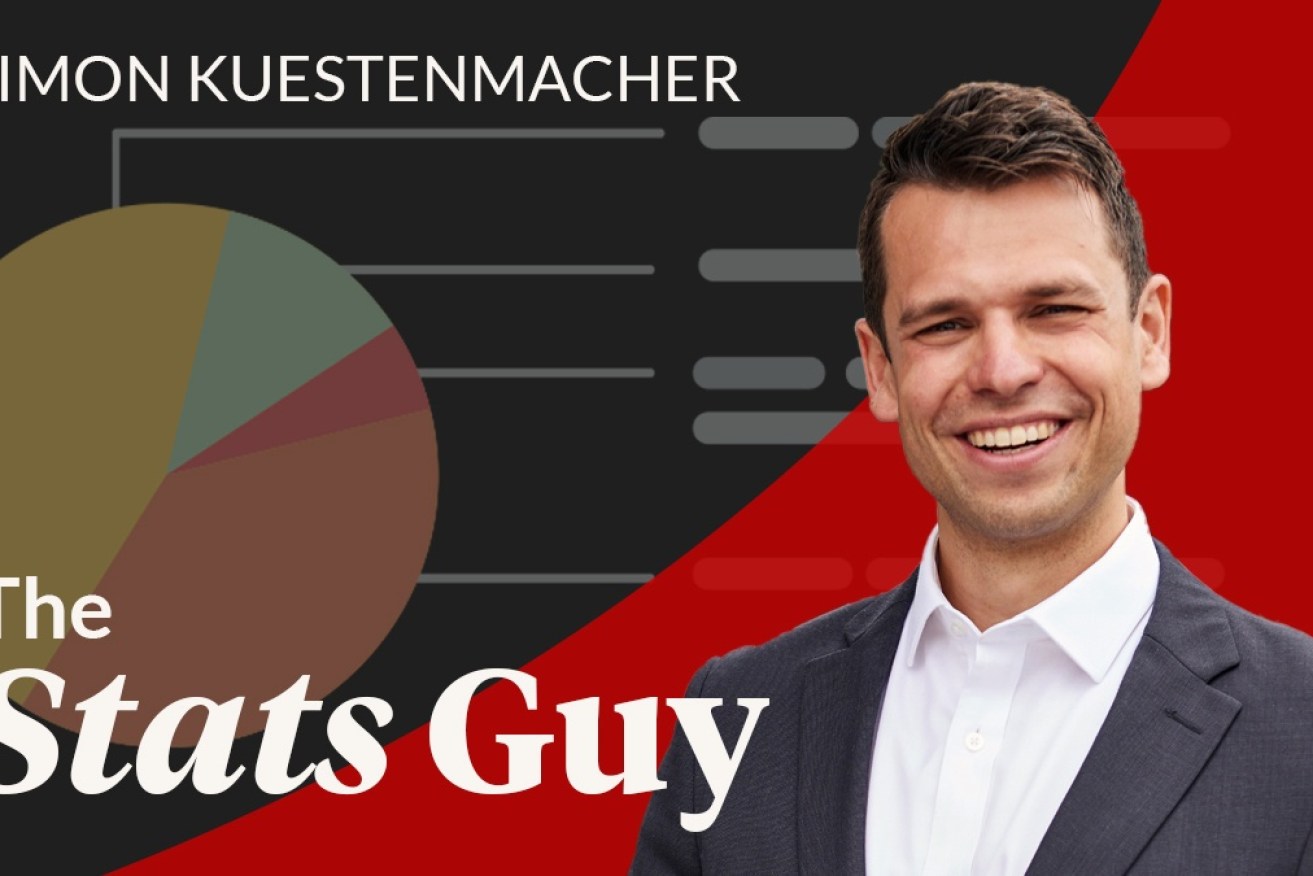The Stats Guy: The big solutions that could fix Australia’s massive housing affordability problem


Simon Kuestenmacher shares the big solutions he believes can tackle the housing affordability crisis. Photo: TND
Housing affordability is a massive problem in Australia.
Nobody disputes this anymore. There are many ways to define and measure housing affordability. My favourite is probably comparing the median house price with the medium income. It’s a quick and intuitive way of gaining an understanding of local house prices. We can compare historic trends this way, or we can compare housing affordability in Australia against international benchmarks.
The US thinktank Demographia compares the median incomes and median house prices in 92 urban housing markets in eight countries every year. Turns out Sydney is the second-least-affordable housing market on the list – only Hong Kong was less affordable. Homebuyers in Sydney needed to fork out 15.3 median annual incomes to buy a median Sydney home.
The researchers at Demographia consider an income-to-house-price ratio of over five as severely unaffordable. Even the more affordable markets in Brisbane (7.4) and Perth (7.1) are nowhere near the affordable classification.
Things are bad right now, but surely we don’t need to worry about housing affordability for much longer, right? After all, we’ve got a federal election coming up next week and both major parties claim that they will tackle the affordability crisis.
Before you picture yourself in your affordable dream house, let’s have a quick look at the proposed solutions. In fact, let’s just look at Labor’s flagship policy, the Shared Equity Scheme, since the current polls suggest an Albanese victory.
Macroeconomic drivers and policies obviously impact the cost of housing. The first home buyers scheme is an example of a policy that unintentionally drove up house prices. The free market learned quickly that first home buyers had more money in their pockets and prices adjusted upwards.
A remedy that made things worse
The money invested into this scheme didn’t make housing more affordable but channelled public funds into the pockets of sellers and developers. Similar nonsensical schemes must be avoided.
Other factors that drive up the cost of housing are mostly outside of our control. If global free trade continues to slow down, if the global supply chain grinds to a halt because Chinese cities and ports are locked down and prices for imports go up, there is nothing that Australian politicians can do.
My view is that the most pragmatic way of tackling the housing affordability crisis is to increase the housing supply. This is something governments can encourage or directly impact. If a housing policy encourages more homes to be built, I am happy.
The big idea that Labor brought to the table for this election was the Shared Equity Scheme. In this model, the ownership of a house is split 60/40 between the homebuyer and the government. This means you need to apply for a much smaller mortgage.
After all, your $500,000 home only costs you $300,000. The remaining $200,000 is purchased by the government. Since the scheme requires you to only provide a two per cent deposit, a humble savings of $6000 sets you up to become a (partial) homeowner. The number of spots in the program is capped at 10,000 per year, and means-testing guarantees that only low- and middle-income households benefit from the scheme. You can even buy back the government’s share of your house over time.
I must admit this sounds like an innovative solution at first. Housing affordability is such a big issue in Australia right now that any out-of-the-box solution is highly welcome and is generally worth the experiment.
There are a few major problems with the Shared Equity Scheme though.
It makes the government an investor in the private real estate market. Now the government has an incentive to increase house prices. The average house price of the 10,000 homes in the scheme might be $500,000. The government is now an investor in the private real estate market and owns 10,000 slices of homes worth $200,000 each.
Pushing home prices higher
That’s $2 billion of the housing market that the government puts on its books every year. Over time the government’s investment portfolio will grow. The longer the scheme goes, the more interested the government will be in driving house prices up.
Remember Demographia’s housing affordability measure? The Shared Equity Scheme would have the median-income-to-house-price ratio spiral further out of control. Considering that the scheme isn’t even limited to newly built housing stock, we must conclude that it will neither increase housing supply nor drive down house prices.
So, what do I suggest? I see a few systemic problems that we could tackle. Big solutions to a big problem.
Firstly, we are not providing enough land. That’s largely a responsibility of local government areas. Local governments are voted in by the current local population, rather than the by the future local population. Therefore, it’s easy for local governments to listen to the NIMBY (Not In My Back Yard) voices that block local development.
I’ve seen too many local councils block social housing developments because residents campaigned against that. Densification? No, thank you. How could this issue be tackled? It requires nothing less than taking power away from local governments. And why not? We manage national population growth on a federal level by setting migration levels, ensuring healthcare to increase longevity, and encouraging or discouraging childbirth through incentives.
The population can only move to where housing is available though. Currently, neither the states nor the federal government has enough power to channel population growth into desired areas. How about allocating certain growth quotas to local governments? This would not be managed by politicians but by an independent panel.
Local government areas would receive quotas of land that need to be made available. Under such a scheme, the decentralisation of the population could be managed centrally. If local governments fail to comply, funding would be withheld.
Don’t worry about that solution too much though. I think any political scheme that requires 550 local government areas to give up powers will never get off the ground.
What else might work?
Another big solution that we desperately need is the establishment of a public housing developer. A publicly owned developer can build and sell housing at lower prices because the land is cheaper (no taxes), or free (all levels of government own quite a bit of land), and because they can remove the profit incentive.
The developer would only operate in the low-margin end of the market and provide social housing, as well as housing for key workers in expensive markets. Only a share of each development would be social housing with the remaining (discounted) sales going to key workers to help to finance further developments.
The need for more social housing is massive and the idea isn’t new. Singapore has long been operating like this. European nations also have public developers. Recently, the idea saw a lot of press coverage in Australia, branded as HouseMate. Yes, this would very much mean the government fudging with the private real estate market. Unlike the Shared Equity Scheme, this meddling would drive house prices down rather than up.
The third big solution would be universal free TAFE. We are lacking tradies and construction workers to build all the housing we desperately need. When there aren’t enough workers available, the high-margin top end of the housing market will always be serviced first, ensuring that the lower end of the market must endure unaffordable housing for even longer.
Free TAFE increases the number of homegrown tradies. The rest need to be imported through the skilled migration scheme and it’s harder than you might think to attract the right type of tradies and channel them into the right locations.
I don’t see any appetite to tackle housing affordability through big solutions though. Band-Aid solutions like First Home Buyer schemes or Shared Equity Schemes will continue to be pushed, rather than even bothering to discuss systemic change.
Expect Australian cities to do even worse in next year’s edition of Demographia’s housing affordability rankings.








